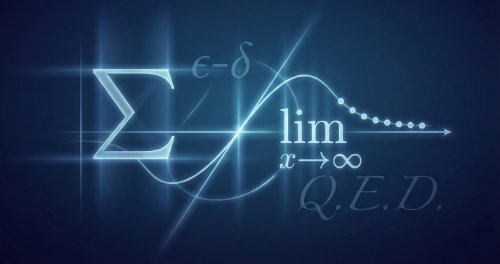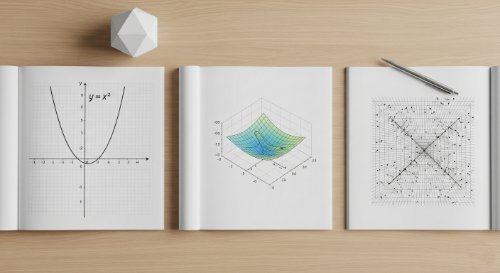Analysis of Infinite Sequences and Series - Real Analysis (Undergraduate Advanced)
 MTH 207: Real Analysis IReal Analysis bridges the critical gap between computational calculus and rigorous advanced mathematics. This learning track delivers the complete NUC CCMAS MTH 207 curriculum, transitioning you from intuitive understanding to formal mathematical proof. It establishes the theoretical foundation required for serious modelling in science, engineering, and pure mathematics.
This programme is targeted at mathematics majors and advanced undergraduates in physics and engineering who have completed foundational calculus. It is designed for students requiring the rigorous analytical skills demanded by graduate-level studies and theoretical research.
You will master the construction of rigorous proofs for sequence and series convergence, applying cornerstone theorems like Bolzano-Weierstrass and Cauchy criteria. You will achieve a formal command of continuity and differentiability, deriving major calculus rules from first principles. Completion provides the non-negotiable prerequisite knowledge for advanced studies in functional analysis, differential equations, and theoretical physics.
MTH 207: Real Analysis IReal Analysis bridges the critical gap between computational calculus and rigorous advanced mathematics. This learning track delivers the complete NUC CCMAS MTH 207 curriculum, transitioning you from intuitive understanding to formal mathematical proof. It establishes the theoretical foundation required for serious modelling in science, engineering, and pure mathematics.
This programme is targeted at mathematics majors and advanced undergraduates in physics and engineering who have completed foundational calculus. It is designed for students requiring the rigorous analytical skills demanded by graduate-level studies and theoretical research.
You will master the construction of rigorous proofs for sequence and series convergence, applying cornerstone theorems like Bolzano-Weierstrass and Cauchy criteria. You will achieve a formal command of continuity and differentiability, deriving major calculus rules from first principles. Completion provides the non-negotiable prerequisite knowledge for advanced studies in functional analysis, differential equations, and theoretical physics.
Real Analysis bridges the critical gap between computational calculus and rigorous advanced mathematics. This learning track delivers the complete NUC CCMAS MTH 207 curriculum, transitioning you from intuitive understanding to formal mathematical proof. It establishes the theoretical foundation required for serious modelling in science, engineering, and pure mathematics. This programme is targeted at mathematics majors and advanced undergraduates in physics and engineering who have completed foundational calculus. It is designed for students requiring the rigorous analytical skills demanded by graduate-level studies and theoretical research. You will master the construction of rigorous proofs for sequence and series convergence, applying cornerstone theorems like Bolzano-Weierstrass and Cauchy criteria. You will achieve a formal command of continuity and differentiability, deriving major calculus rules from first principles. Completion provides the non-negotiable prerequisite knowledge for advanced studies in functional analysis, differential equations, and theoretical physics.
 MTH 201: Mathematical Methods IThis learning track delivers the complete mathematical toolkit required for a university-level science, engineering, or computing degree. It systematically covers the entire MTH 201 curriculum, building from the foundational principles of single-variable calculus - functions, limits, continuity, and differentiability - to the advanced methods of multivariable calculus, infinite series, numerical methods, and ordinary differential equations. This is the definitive preparation for advanced quantitative study.
This programme is designed for second-year students offering MTH 201 at Obafemi Awolowo University, Ile-Ife, Nigeria. It is also helpful for any student in a STEM field - including physics, engineering, and computer science - who requires a rigorous and comprehensive command of calculus and its applications.
This track delivers a full skill set in mathematical analysis and applied problem-solving. Graduates will be able to solve a wide range of problems, from optimising multivariable functions to modelling dynamic systems with differential equations and testing the convergence of infinite series. This programme directly prepares students for success in advanced courses in vector calculus, partial differential equations, and real analysis, providing the necessary foundation for a career in engineering, data science, or theoretical physics.
MTH 201: Mathematical Methods IThis learning track delivers the complete mathematical toolkit required for a university-level science, engineering, or computing degree. It systematically covers the entire MTH 201 curriculum, building from the foundational principles of single-variable calculus - functions, limits, continuity, and differentiability - to the advanced methods of multivariable calculus, infinite series, numerical methods, and ordinary differential equations. This is the definitive preparation for advanced quantitative study.
This programme is designed for second-year students offering MTH 201 at Obafemi Awolowo University, Ile-Ife, Nigeria. It is also helpful for any student in a STEM field - including physics, engineering, and computer science - who requires a rigorous and comprehensive command of calculus and its applications.
This track delivers a full skill set in mathematical analysis and applied problem-solving. Graduates will be able to solve a wide range of problems, from optimising multivariable functions to modelling dynamic systems with differential equations and testing the convergence of infinite series. This programme directly prepares students for success in advanced courses in vector calculus, partial differential equations, and real analysis, providing the necessary foundation for a career in engineering, data science, or theoretical physics.
This learning track delivers the complete mathematical toolkit required for a university-level science, engineering, or computing degree. It systematically covers the entire MTH 201 curriculum, building from the foundational principles of single-variable calculus - functions, limits, continuity, and differentiability - to the advanced methods of multivariable calculus, infinite series, numerical methods, and ordinary differential equations. This is the definitive preparation for advanced quantitative study. This programme is designed for second-year students offering MTH 201 at Obafemi Awolowo University, Ile-Ife, Nigeria. It is also helpful for any student in a STEM field - including physics, engineering, and computer science - who requires a rigorous and comprehensive command of calculus and its applications. This track delivers a full skill set in mathematical analysis and applied problem-solving. Graduates will be able to solve a wide range of problems, from optimising multivariable functions to modelling dynamic systems with differential equations and testing the convergence of infinite series. This programme directly prepares students for success in advanced courses in vector calculus, partial differential equations, and real analysis, providing the necessary foundation for a career in engineering, data science, or theoretical physics.
Course Chapters